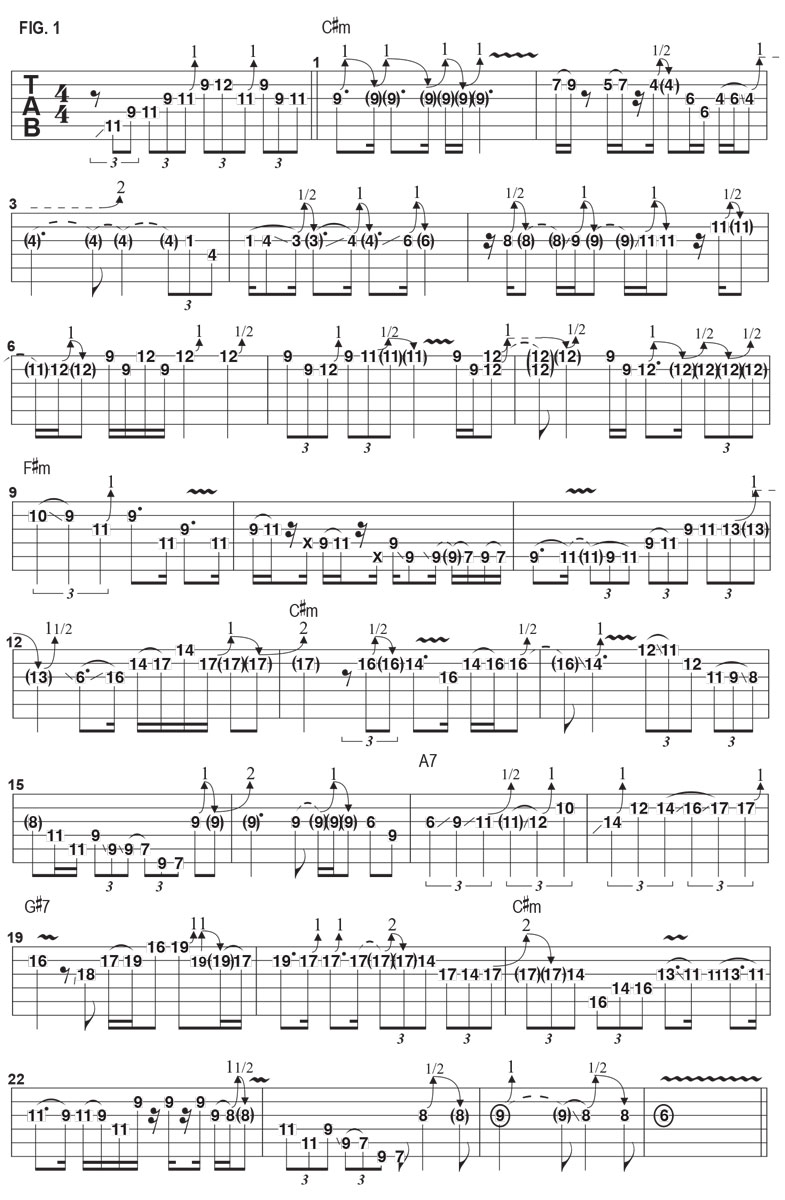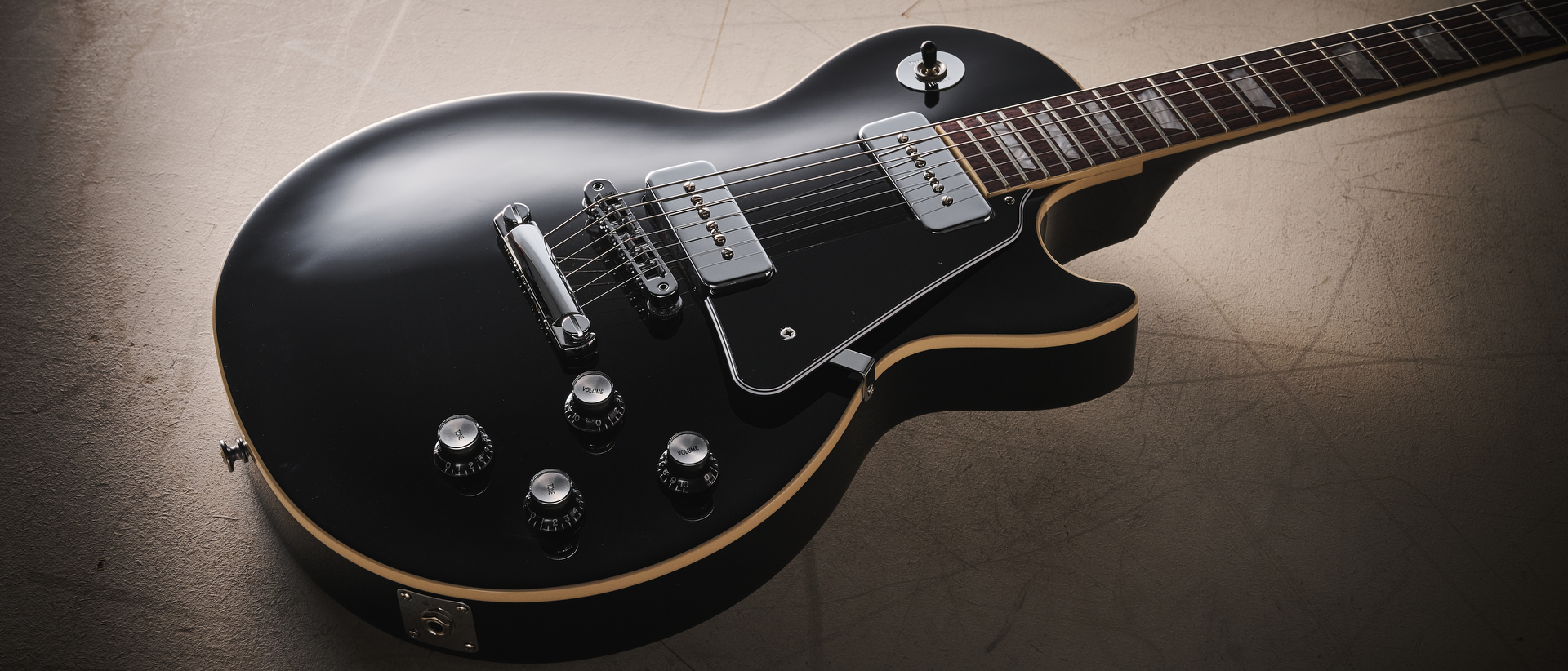How to target chord tones with string bends and make your solos sing
Ring the changes with Andy Timmons’ masterclass in expressive string bending

String bending offers us guitarists a highly effective way to evoke a wide range of sounds and emotions from our instrument and emulate some of the qualities of the human voice, such as adding vibrato to a note, or seamlessly sliding, or gliding, from one pitch up or down to another, what is known as glissando. All of our favorite players use bending as an essential expressive tool when soloing.
In this lesson on this highly effective and useful technique, I’ll play through a 24-bar minor blues progression in the key of C# minor, touching on as many different approaches to string bending as I can (see FIGURE 1).
Structurally, the 24-bar progression doubles the number of bars spent on each chord in a standard 12-bar form. Specifically, the i (one minor) chord, C#m, is played for eight bars, followed by four bars on the iv (four minor) chord, F#m, then four bars back on the i, C#m.
At this point, I add a slight variation, or twist, on the basic i - iv - v minor blues progression; instead of going to the v (five minor) chord, Gm, I go to the bVI (flat 6) chord, A7, for two bars, followed by a major version of the V (five) chord, G#7, for two bars. The progression then concludes with four bars on the i, C#m.
For the solo, I’m primarily utilizing notes from the C# Dorian mode (C#, D#, E, F#, G#, A#, B) as a basic framework for my lines. But when the progression moves to F#m, I substitute an A note for A#, as A is the minor 3rd of that chord.
This switch puts us in the C# Aeolian mode (C#, D#, E, F#, G#, A, B), which may also be thought of as F# Dorian (F#, G#, A, B, C#, D#, E). When we get to A7, I again substitute A for A#, as A is that chord’s root.
All that said, I don’t want you to think that it’s essential to be focused on scales/modes while trying to play in a musical way. While it is very helpful to know all your chord-scale relationships, your solo will only be effective if its musicality connects with the listener.
All the latest guitar news, interviews, lessons, reviews, deals and more, direct to your inbox!
An alternative, simpler, improvisational approach to take here is to build your lines from a minor pentatonic viewpoint (C# minor pentatonic scale: C#, E, F#, G#, B) and add the “modal” pitches D# and either A# or A, as tones that provide other colors and places to bend up to or back from.
For example, in bar 2, I bend D# up a half step to E and then release back to D#. At the end of bar 5, I bend A# up a half step to B then quickly release back to A#. As you study this solo, you’ll find more examples of this approach.
By the way, the track I’m soloing over here comes from my TrueFire In the Jam course, where you can find a host of other backing tracks to solo over. Check them out!
Andy Timmons is a world-renowned guitarist known for his work with the Andy Timmons Band, as well as Danger Danger and Simon Phillips.


